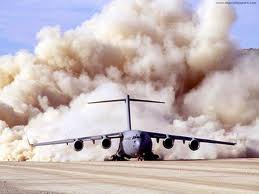109 posts
• Page 3 of 5 • 1, 2, 3, 4, 5
Which wasteland did u prefer F03 or FNV
-

RObert loVes MOmmy - Posts: 3432
- Joined: Fri Dec 08, 2006 10:12 am
New Vegas' wasteland is better realism-wise. Fallout 3's wasteland is better gameplay-wise. And since in a game gameplay matters more than realism...
What do you mean by that (Better gameplay-wise)? Or, what do you consider contributing to gameplay in this regard? (Just out of curiosity as I consider the New Vegas maps plausibility with the setting as a highpoint in gameplay. Or, contributing to it in a favorable manner, to word it differently.)
-

Gavin boyce - Posts: 3436
- Joined: Sat Jul 28, 2007 11:19 pm
As i keep complaining, New Vegas has too easy and too little enemies and locations. I had much more fun in the DC wasteland.
-

Taylrea Teodor - Posts: 3378
- Joined: Sat Nov 18, 2006 12:20 am
Fallout 3 for the random encounters and the vibe but i like fnv just as much
-

Emily abigail Villarreal - Posts: 3433
- Joined: Mon Aug 27, 2007 9:38 am
New Vegas, because I'm not forced to fight annoying ankle biters as often when going someplace. Going someplace in FO3 involved leaving a trail of dead Yao Guai and Radscorpians...all the freaking time with no change save for the odd rabid robot, or deathclaw.
-

Dalley hussain - Posts: 3480
- Joined: Sun Jun 18, 2006 2:45 am
New Vegas, because I'm not forced to fight annoying ankle biters as often when going someplace. Going someplace in FO3 involved leaving a trail of dead Yao Guai and Radscorpians...all the freaking time with no change save for the odd rabid robot, or deathclaw.
Also this.
-

Judy Lynch - Posts: 3504
- Joined: Fri Oct 20, 2006 8:31 am
NV is obviously going to win this vote since it's asked in NV forum.
Personally, I like them both equally. NV has detail, F3 has size.
One thing I really prefer in F3 over NV is the uninhabited urban areas with super mutants. I'm a svcker for house to house fighting.
Personally, I like them both equally. NV has detail, F3 has size.
One thing I really prefer in F3 over NV is the uninhabited urban areas with super mutants. I'm a svcker for house to house fighting.
-

Red Sauce - Posts: 3431
- Joined: Fri Aug 04, 2006 1:35 pm
hmmm.. while i DO i like both of them, i don't think either are great ... but i'll go with FO3's wastleand, pretty much only because i lived in Vegas for about 2 years and the Mojave looks like how it's depicted in NV without the US being hit by nuclear war :tongue: i like the desperate apocolyptic look/feel to FO3's wasteland a little more, even if it doesn't seem logical since it 200 years after but wuddyagonnado?
-

Jinx Sykes - Posts: 3501
- Joined: Sat Jan 20, 2007 11:12 pm
Personally I loved Fallout 2's world the best.
-

Melissa De Thomasis - Posts: 3412
- Joined: Tue Feb 27, 2007 6:52 pm
I concur with the aspect of the Fallout 3 wasteland being better for exploration purposes. While the Mojave has its advantages, I found it frustrating to explore the wastes via canyons and around mountains and stuff  Besides, I kinda liked the urban stuff too. But the independent locations in the Mojave are a lot of times more interesting than the ones in the Capital Wasteland (gas stations and such).
Besides, I kinda liked the urban stuff too. But the independent locations in the Mojave are a lot of times more interesting than the ones in the Capital Wasteland (gas stations and such).
-

lauren cleaves - Posts: 3307
- Joined: Tue Aug 15, 2006 8:35 am
I prefered Fallout 3's wasteland. It just felt more desolate, and it felt like you were really hanging in there for survival.
-

Daramis McGee - Posts: 3378
- Joined: Mon Sep 03, 2007 10:47 am
I prefer the fo3 wasteland but have to admit there are a ton of hills to snipe from in FNV wich is a plus to me since sniping is a great way to pass time in between missions
-

Naomi Lastname - Posts: 3390
- Joined: Mon Sep 25, 2006 9:21 am
The ruins and all the places with little stories were great in Fallout 3.
The New Vegas is more consistent and internally logic and doesn't have me fighting off creatures left and right when traveling from one place to another. For an apparently abandoned wasteland, there were a [censored] load of raiders, yoa gaui, molerats and what more.
The New Vegas is more consistent and internally logic and doesn't have me fighting off creatures left and right when traveling from one place to another. For an apparently abandoned wasteland, there were a [censored] load of raiders, yoa gaui, molerats and what more.
-

CYCO JO-NATE - Posts: 3431
- Joined: Fri Sep 21, 2007 12:41 pm
FALLOUT 3; its map is much bigger and it does feel like DC. In New Vegas the didn't do a great of a job with the gambling. It didn't feel like Vegas.
-

Melanie - Posts: 3448
- Joined: Tue Dec 26, 2006 4:54 pm
I prefer the DC area but I also like the Mojave; it's nice that we have some variety.
This might be off topic, but I've noticed a tendency for people (especially the 'F & F2 are teh best evar' crowd) to dismiss the setting of Fallout 3 because it's not 'realistic'. Hello? It's a video game whose lore is based on deliberately anachronistic science. Realism does not apply. There's very little that is 'realistic' (true to modern science) in any of the game's settings. The only way to judge the Capital Wasteland's realism is by the rules/lore of the series.
The DC area was heavily bombed and burned for weeks or months. Everyone died or became Ghouls. In real life that would be the end of it -- the radiation would persist for hundreds or thousands of years; in the Science! of Fallout, much radiation has subsided, entering the water table, after a hundred years or so. In the outlying areas of Eastern Virginia the radiation faded sooner, allowing the construction of Megaton not long after the war. [Note: Remember, scale in F3 and F:NV is not exact -- you can't really walk from Megaton to DC in 3 minutes; the sandbox is a compressed, symbolic version of the 'real' map -- Megaton is 'actually' about 20 miles from DC]
So, soon after the war, there's Megaton and possibly a few small settlements. The water is irradiated and crops are extremely hard to grow. It would be a scavenger society; luckily pre-war food, thanks to Science!, is still edible and plentiful. Someone (robots?) is still filling soda machines and automats. There seems to have been some early attempts at rebuilding (radiation hazard signs, etc) but the responsible parties have either vanished or have not taken credit.
Around this time people are emerging from Western vaults, finding it possible to start rebuilding, and bringing about the setting of the first two games.
Now it's 200 years later. Why is the Capital wasteland still a wasteland? Sadly, the game itself is not forthcoming with answers, but conclusions can be drawn from some in-game information and secondary documentation. It's an unorganized wasteland because, in addition to environmental hardships, civilization is being suppressed.
First, the EC Super Mutants are a constant threat. They kidnap, devour and raid human settlements. Being immune to radiation they can retreat to safety from organized opposition.
The Talon Company has been charged with maintaining anarchy and disorganization; it has not been revealed by whom (my money's on the British). But someone with the ability to mass-produce weapons and armor has determined that DC should remain a wasteland.
Slavers kidnap people and take them to the Pitt. Raiders (I wish they'd been better developed), out of their minds on chems, prey upon the countryside. Is someone sponsoring them, as well?
There are (admittedly vague) hints throughout the game that there are traders from outside the boundaries of the map; ammunition and, by implication, weapons are being manufactured somewhere. It's likely that much of the prewar food, loot and gear found by the player was cached there by earlier scavengers. It's a scavenger/trade society, not an agricultural one.
I could go on; I'm sure there are others out there who can add some details. The chronology (for example) isn't perfect, by any means. There are a few things even Science! can't explain, but on the whole I think the Capital Wasteland is, in its context as a Fallout setting, both believable and logical. Taking into account the more dangerous terrain and the sheer number of organized enemies, I have no problem believing 200 years have passed.
This might be off topic, but I've noticed a tendency for people (especially the 'F & F2 are teh best evar' crowd) to dismiss the setting of Fallout 3 because it's not 'realistic'. Hello? It's a video game whose lore is based on deliberately anachronistic science. Realism does not apply. There's very little that is 'realistic' (true to modern science) in any of the game's settings. The only way to judge the Capital Wasteland's realism is by the rules/lore of the series.
The DC area was heavily bombed and burned for weeks or months. Everyone died or became Ghouls. In real life that would be the end of it -- the radiation would persist for hundreds or thousands of years; in the Science! of Fallout, much radiation has subsided, entering the water table, after a hundred years or so. In the outlying areas of Eastern Virginia the radiation faded sooner, allowing the construction of Megaton not long after the war. [Note: Remember, scale in F3 and F:NV is not exact -- you can't really walk from Megaton to DC in 3 minutes; the sandbox is a compressed, symbolic version of the 'real' map -- Megaton is 'actually' about 20 miles from DC]
So, soon after the war, there's Megaton and possibly a few small settlements. The water is irradiated and crops are extremely hard to grow. It would be a scavenger society; luckily pre-war food, thanks to Science!, is still edible and plentiful. Someone (robots?) is still filling soda machines and automats. There seems to have been some early attempts at rebuilding (radiation hazard signs, etc) but the responsible parties have either vanished or have not taken credit.
Around this time people are emerging from Western vaults, finding it possible to start rebuilding, and bringing about the setting of the first two games.
Now it's 200 years later. Why is the Capital wasteland still a wasteland? Sadly, the game itself is not forthcoming with answers, but conclusions can be drawn from some in-game information and secondary documentation. It's an unorganized wasteland because, in addition to environmental hardships, civilization is being suppressed.
First, the EC Super Mutants are a constant threat. They kidnap, devour and raid human settlements. Being immune to radiation they can retreat to safety from organized opposition.
The Talon Company has been charged with maintaining anarchy and disorganization; it has not been revealed by whom (my money's on the British). But someone with the ability to mass-produce weapons and armor has determined that DC should remain a wasteland.
Slavers kidnap people and take them to the Pitt. Raiders (I wish they'd been better developed), out of their minds on chems, prey upon the countryside. Is someone sponsoring them, as well?
There are (admittedly vague) hints throughout the game that there are traders from outside the boundaries of the map; ammunition and, by implication, weapons are being manufactured somewhere. It's likely that much of the prewar food, loot and gear found by the player was cached there by earlier scavengers. It's a scavenger/trade society, not an agricultural one.
I could go on; I'm sure there are others out there who can add some details. The chronology (for example) isn't perfect, by any means. There are a few things even Science! can't explain, but on the whole I think the Capital Wasteland is, in its context as a Fallout setting, both believable and logical. Taking into account the more dangerous terrain and the sheer number of organized enemies, I have no problem believing 200 years have passed.
-

Amiee Kent - Posts: 3447
- Joined: Thu Jun 15, 2006 2:25 pm
I, for one, haven't complained about the lack of realism. however, I am complaining about how the settlements make no [censored] sense, there are no living trees and no one is rebuilding.
The towns in Fallout 1 & 2 had an economy, food sources and things like that, there were forests and living trees in Fallout 1 & 2 and there was rebuilding in Fallout 1 & 2.
The towns in Fallout 1 & 2 had an economy, food sources and things like that, there were forests and living trees in Fallout 1 & 2 and there was rebuilding in Fallout 1 & 2.
-

Jennifer Munroe - Posts: 3411
- Joined: Sun Aug 26, 2007 12:57 am
The Capitol Wasteland was much more beautiful but same time so cruel. But its allso nice to see some sun and moon in the sky like in FNV. So there is down and up sides in both wastelands.
-

Darren - Posts: 3354
- Joined: Wed Jun 06, 2007 2:33 pm
From those two options: FNV wasteland.
Nah, let people argue and let the mods take care of locking things when appropriate.
Nah, let people argue and let the mods take care of locking things when appropriate.
I'd agree. Forum members playing "psuedo moderator" has gotten as out of control as anything on this board. Other forums I frequent have strict rules against telling people how to post. That is up to the mods.
-

CSar L - Posts: 3404
- Joined: Fri Nov 09, 2007 9:36 pm
From those two options: FNV wasteland.
Nah, let people argue and let the mods take care of locking things when appropriate.
Nah, let people argue and let the mods take care of locking things when appropriate.
I'd agree. Forum members playing "psuedo moderator" has gotten as out of control as anything on this board. Other forums I frequent have strict rules against telling people how to post. That is up to the mods.
-

kasia - Posts: 3427
- Joined: Sun Jun 18, 2006 10:46 pm
This might be off topic, but I've noticed a tendency for people (especially the 'F & F2 are teh best evar' crowd) to dismiss the setting of Fallout 3 because it's not 'realistic'. Hello? It's a video game whose lore is based on deliberately anachronistic science. Realism does not apply. There's very little that is 'realistic' (true to modern science) in any of the game's settings. The only way to judge the Capital Wasteland's realism is by the rules/lore of the series.
It's about internal logic (lore of the series).
The often put forth argument is that it was heavily bombed, that maybe so, but not with nuclear weapons. Many things are still standing (looks more like a warzone), real impact sites are not that common and even so SCIENCE! puts the LA Boneyard as habitable about 80 years after the bombs leveled it, so why is the radiation so pervasive in the CW.
The entire place is as dead as it can be, yet people still live there.
It's got a really nice atmosphere and I think that many people would contest to that (especially without the green tint), it just doesn't make sense in how it works internally and in regards to the lore.
-

Rudy Paint fingers - Posts: 3416
- Joined: Sun Nov 11, 2007 1:52 am
To me New Vegas is much more pretty so I like that better, and I know The Capital Wasteland back to front
-

Rob Smith - Posts: 3424
- Joined: Wed Oct 03, 2007 5:30 pm
Actually, the map in NV is bigger.
and there's nothing interesting in it besides the main areas.
Overall I enjoyed exploring Fallout 3 better, it was slightly depressing, there were actually interesting little tidbits here and there, there was something on each corner of the map, it actually felt like this part of the world was destroyed, and there wasn't a huge portion of land taken up by mountains.
-

Far'ed K.G.h.m - Posts: 3464
- Joined: Sat Jul 14, 2007 11:03 pm
and there's nothing interesting in it besides the main areas.
I disagree. I thought New Vegas' map had lots of interesting stuff, though the general feel of it wasn't as good as Fallout 3.
-

Josh Trembly - Posts: 3381
- Joined: Fri Nov 02, 2007 9:25 am
109 posts
• Page 3 of 5 • 1, 2, 3, 4, 5
